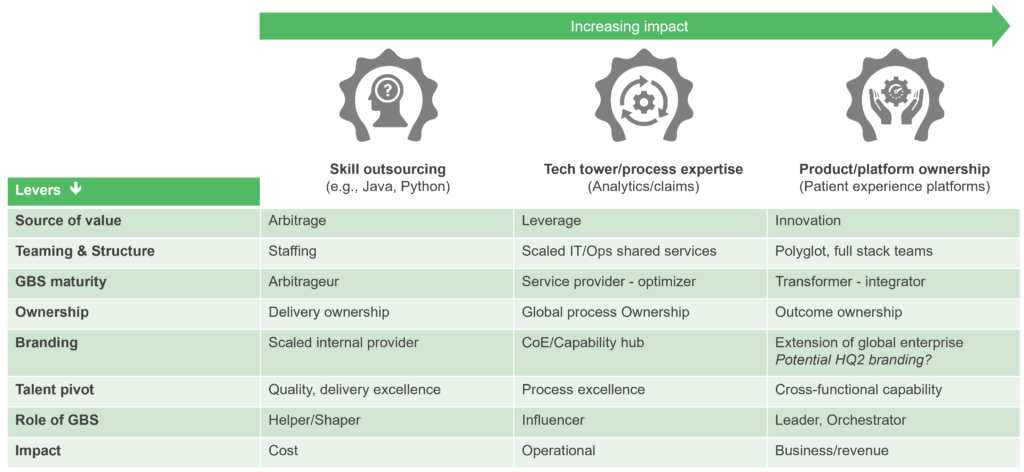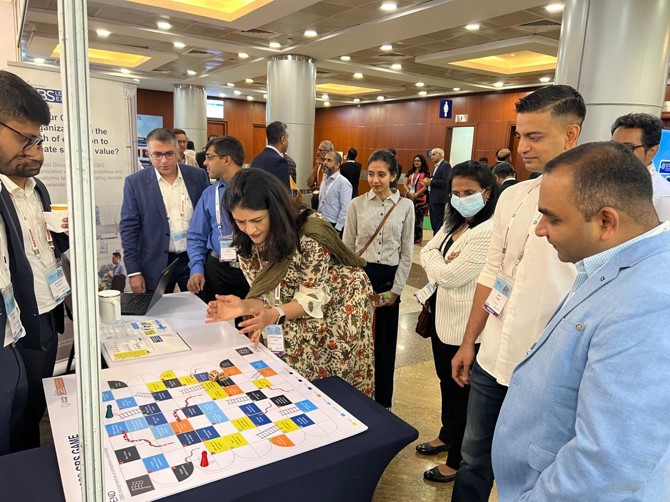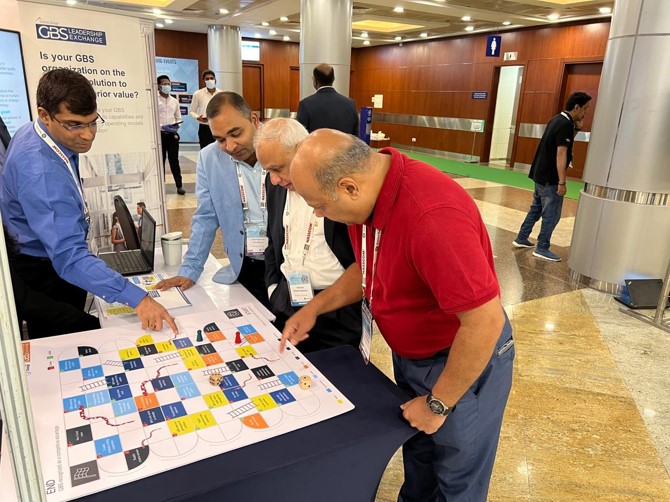Six Highlights from the 2022 NASSCOM GCC Conclave to Watch

India’s continued position as a leading destination for Global Capacity Centers (GCCs) was among the key themes emerging from the first hybrid National Association of Software and Service Companies (NASSCOM) GCC Conclave on June 29-30 in Hyderabad. To learn the top priorities among GCC leaders, read on for takeaways from our experts who attended the mega event.
While we had doubts over GCC participation in the first-ever hybrid conclave since 2019, the event was a huge success for GCC leaders who enjoyed making and renewing contacts, exchanging learnings and best practices, and sharing fond memories of past gatherings.
As the strategic partner for NASSCOM, Everest Group is pleased to share these six key takeaways from the GCC Conclave, themed Leaning in for Impact in the Networked World:
- Continued endorsement of India as a leading GCC location
India remains at the center of the offshore/nearshore global delivery portfolio across most enterprises. Most GCC leaders expect higher growth from the India centers than other locations. Some have plans to double their India headcount in the next two to four years.
- Return to office (location) is a top priority for GCC leaders
Two out of three GCC leaders highlighted their efforts to bring employees back to work locations as part of the hybrid model. With location flexibility emerging as a strong value proposition for employees, balancing employee preferences and organization goals (e.g., building workplace culture) is becoming critical.
- Increased endorsement for the GCC model has positively impacted GCCs’ influence across the enterprise; however only in pockets
GCC influence across the organization has increased post-pandemic but only in pockets. Building strong adjacencies with core enterprise priorities goes beyond scaling high-skill capabilities in the GCC. Many GCC leaders still have concerns about managing cost competitiveness with third-party providers, securing buy-in for expanding capabilities, etc. To top this, several enterprises are restructuring, which is also impacting GCC growth.
- The next wave of growth is likely to be anchored around centralization (again)
The “scale-optimize-centralize” cycle is not new for GCCs. Across different stages of evolution, GCCs have experienced this cycle and have also come out successfully post internal restructuring initiatives (e.g., banks centralizing third-party risk compliance that supports different businesses).
Over the last two years, many GCCs expanded the breadth and depth of services offered (with insourcing also being a factor). Many leaders are now looking at the next wave of centralizing capabilities. However, this centralization wave will likely be more borderless because the remote model has helped address location dependency constraints. In that context, the role of India-based GCCs as an “orchestrator of services” (see next point) across the global delivery network will likely increase. Click here to check out Everest Group’s thought leadership content around the borderless GCC/GBS model.
- Mature GCCs are betting big on services orchestration
As GCCs expand ownership, a wide array of responsibilities exist. Mature GCCs are already orchestrating services – coordinating with in-house teams, third-party vendors, start-ups, etc. – and are owning end-to-end accountability for services in scope. See the exhibit below for an example of GCC ownership, from skills to processes to platforms, with distinct needs from talent and operating model perspectives.

Exhibit 1: The spectrum of GCC ownership (tech example)
- The GCC journey is akin to a Snakes and Ladders game!
Factors such as increased sponsorship and niche talent availability can help accelerate the journey towards being recognized as an entity delivering competitive advantage for the global enterprise. At the same time, conditions like macroeconomic impacts (e.g., the Ukraine war) and spinning off divisions at the enterprise level could deter GCC’s progress.
Several leaders enthusiastically played the GBS 2022 Snake and Ladders game, developed by Deborah Kops and Everest Group team, at the 2022 NASSCOM GCC Conclave. The game highlights the perils and opportunities for GBS organizations as they strive to become entities delivering competitive advantage for global enterprises. Learn more about this game in our upcoming LinkedIn Live event. As one GCC leader noted, “Yes, there are several ups and downs. The key is to keep rolling the dice!” And the same can be said about the GCC journey.


Discover more about Everest Group’s research on the GCC evolution.